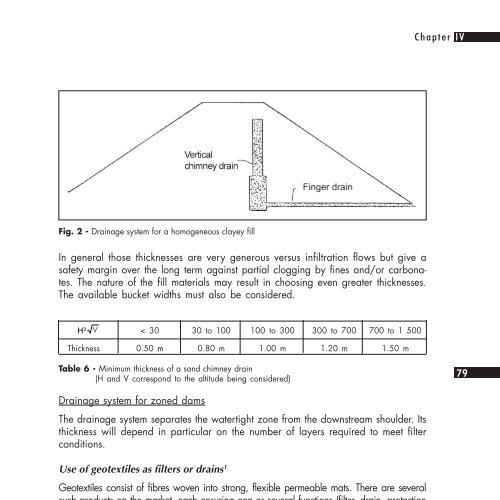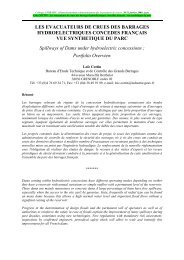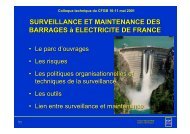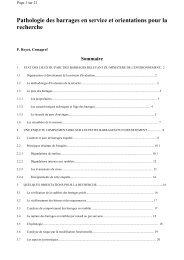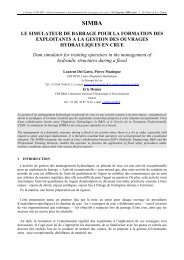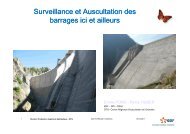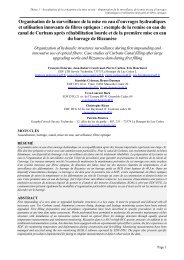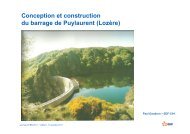SMALL DAMS
SMALL DAMS - Comité Français des Barrages et Réservoirs
SMALL DAMS - Comité Français des Barrages et Réservoirs
- No tags were found...
Create successful ePaper yourself
Turn your PDF publications into a flip-book with our unique Google optimized e-Paper software.
Chapter IV<br />
Fig. 2 - Drainage system for a homogeneous clayey fill<br />
In general those thicknesses are very generous versus infiltration flows but give a<br />
safety margin over the long term against partial clogging by fines and/or carbonates.<br />
The nature of the fill materials may result in choosing even greater thicknesses.<br />
The available bucket widths must also be considered.<br />
H² V < 30 30 to 100 100 to 300 300 to 700 700 to 1 500<br />
Thickness 0.50 m 0.80 m 1.00 m 1.20 m 1.50 m<br />
Table 6 - Minimum thickness of a sand chimney drain<br />
(H and V correspond to the altitude being considered)<br />
79<br />
Drainage system for zoned dams<br />
The drainage system separates the watertight zone from the downstream shoulder. Its<br />
thickness will depend in particular on the number of layers required to meet filter<br />
conditions.<br />
Use of geotextiles as filters or drains 1<br />
Geotextiles consist of fibres woven into strong, flexible permeable mats. There are several<br />
such products on the market, each ensuring one or several functions (filter, drain, protection<br />
from puncturing, etc.). Some applications have already been mentioned.<br />
Of course, it is essential to avoid considering a geotextile as a general-purpose product (a<br />
geotextile that can support rockfill placement without tearing is not at all similar to a geotextile<br />
used as a filter).<br />
In a dam, geotextiles are most often used to help in discharging percolation flows by acting<br />
as a protective filter for a granular drainage material (see photo 9 p. IV). However, installation<br />
of a geotextile to protect a chimney drain is no easy matter. In this case, an alternative<br />
solution consists in building the fill dam in two stages, in order to place the geotextile<br />
surrounding the drain on a sloped face that is stable in the short term (see figure 3).<br />
1. See Bibliography, references 3 and 4, p.111.


